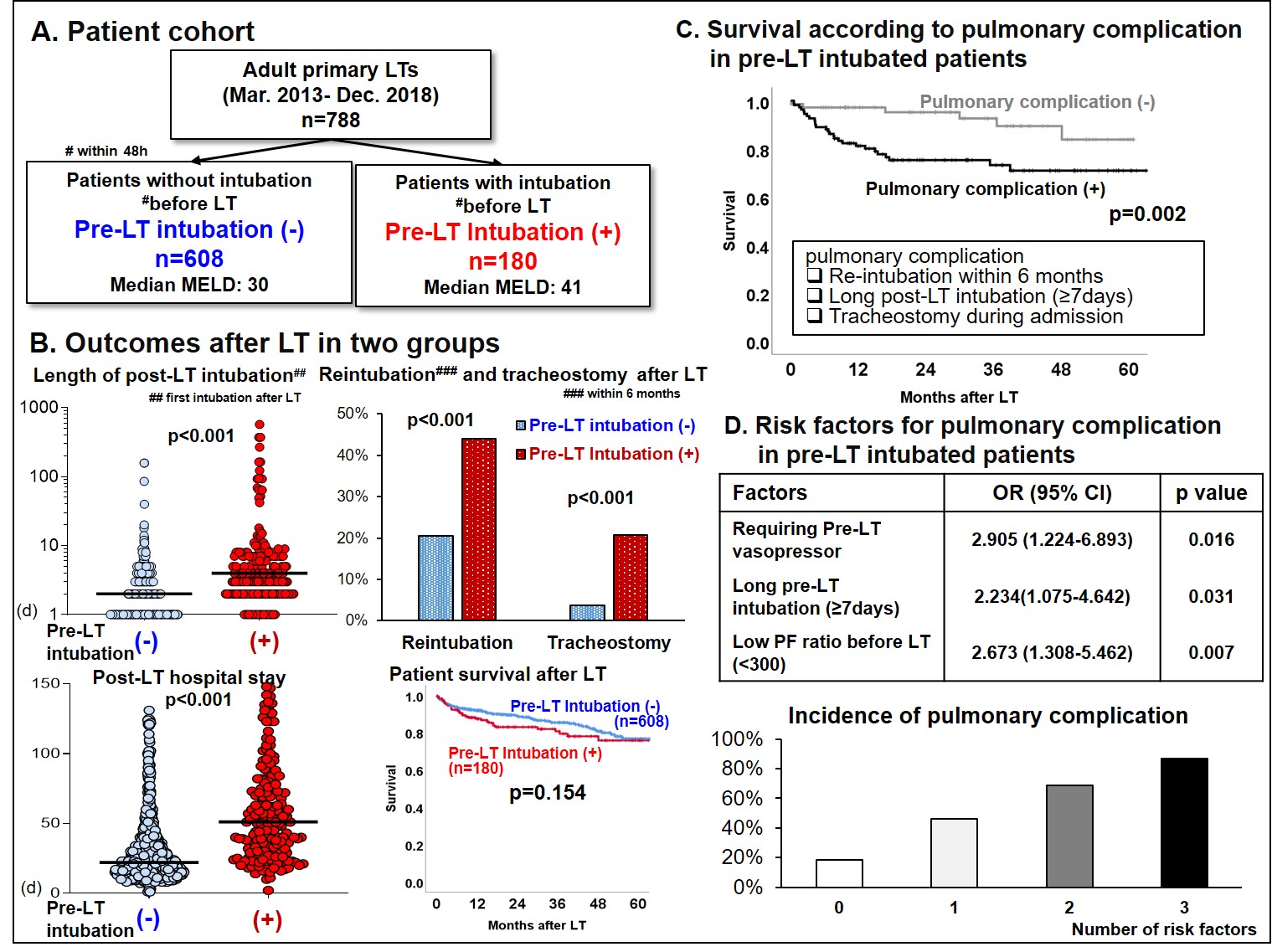Liver Transplantation in Patients Requiring Pre-Transplant Mechanical Ventilation
The Dumont-UCLA Transplant Center, UCLA, Los Angeles, CA
Meeting: 2020 American Transplant Congress
Abstract number: D-133
Keywords: High-risk
Session Information
Session Name: Poster Session D: Liver: Recipient Selection
Session Type: Poster Session
Date: Saturday, May 30, 2020
Session Time: 3:15pm-4:00pm
 Presentation Time: 3:30pm-4:00pm
Presentation Time: 3:30pm-4:00pm
Location: Virtual
*Purpose: Increasing transplant candidate acuity has resulted in more patients requiring perioperative intensive care and mechanical ventilation prior to liver transplantation (LT). However, studies on outcomes of LT recipients requiring intubation before LT remain limited. We assessed the outcomes after LT in this challenging patient population.
*Methods: Patients were analyzed based on Pre-LT mechanical ventilation requirement. Kaplan-Meier survival curves were generated, and differences in survival rates were analyzed using the Log rank test. Multivariate logistic regression identified risk factors for pulmonary complications (778 adult primary LTs, retrospective, Mar. 2013 to Dec. 2018, single center).
*Results: Of 778 patients, 180 patients (23%) required pre-LT intubation (Fig. A). Pre-LT intubated recipients had significantly higher MELD (41 vs 30, p<0.001), higher rates dialysis (94 vs 38 %, p<0.001) and vasopressor requirement (81 vs 19 %, p<0.001) compared to those in pre-LT non-intubation group. Patients in the pre-LT intubation group had a significantly longer length of post-LT intubation (4 vs 2 days, p<0.001), post-LT hospital stay (51 vs 22 days, p<0.001), a higher incidence of re-intubation within 6 months (44 vs 21 %, p<0.001), and tracheostomy (21 vs 4 %, p<0.001). Interestingly, there were no differences in patient survival between the two groups (5-y: 76 vs 77 %, p=0.159). Pre-LT intubated patients who developed pulmonary complications (re-intubation, post-intubation≥7days, or tracheostomy) (n=101) had significantly inferior survival compared to pre-LT intubation patients without pulmonary complications (n=71) (p=0.002) (Fig. C). Multivariate analysis identified pre-LT vasopressor requirement (p=0.016), pre-LT intubation for ≥7days (p=0.031), and low PaO2/FiO2 (PF) ratio (<300) (p=0.007) as independent risk factors for those complications. Addition of multiple risk factors significantly correlated with increased incidence of post-LT pulmonary complications (p<0.001) (Fig. D)
*Conclusions: This represents one of the largest single center series examining the impact of pre-LT mechanical ventilation on outcomes. While pre-LT intubation did not impact survival, pre-LT intubated patients had longer length of hospital stay, and more pulmonary complications. We identified pre-LT vasopressor requirement, Pre-LT intubation ≥7days, and low P/F ratio as risk factors for pulmonary complications. Careful consideration of these factors may aid in patient selection and management.
To cite this abstract in AMA style:
Ito T, Aziz A, Murray AE, Younan S, III JDiNorcia, Agopian VG, Yersiz H, Farmer DG, Busuttil RW, Kaldas FM. Liver Transplantation in Patients Requiring Pre-Transplant Mechanical Ventilation [abstract]. Am J Transplant. 2020; 20 (suppl 3). https://atcmeetingabstracts.com/abstract/liver-transplantation-in-patients-requiring-pre-transplant-mechanical-ventilation/. Accessed December 16, 2025.« Back to 2020 American Transplant Congress

